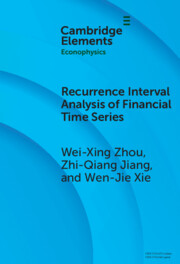Element contents
Recurrence Interval Analysis of Financial Time Series
Published online by Cambridge University Press: 20 February 2024
Summary
Keywords
- Type
- Element
- Information
- Series: Elements in EconophysicsOnline ISBN: 9781009381741Publisher: Cambridge University PressPrint publication: 21 March 2024



